There are several types of mint that you’ll find grown in gardens around the world. While spearmint and peppermint are probably the most commonly thought of, there are tons of others that have a bunch of different uses.
How Many Types of Mint are There?
There are said to be more than 7,500 varieties of mint, some grown for medicinal or cooking purposes, while others are grown as shrubs or trees and ornamentals.
Culinary Uses for Mint
Some of the ways mint is often used in the kitchen include:
- Desserts
- Drinks
- Infused Oil & Vinegar
- Teas
- Salads
- Garnishes
Medicinal Uses for Mint
Mint is used for more than just food. A lot of cultures use mint in other ways as well:
- Cold & Flu Relief
- Peppermint for aiding digestion
- Migraines and muscle aches
Apple Mint
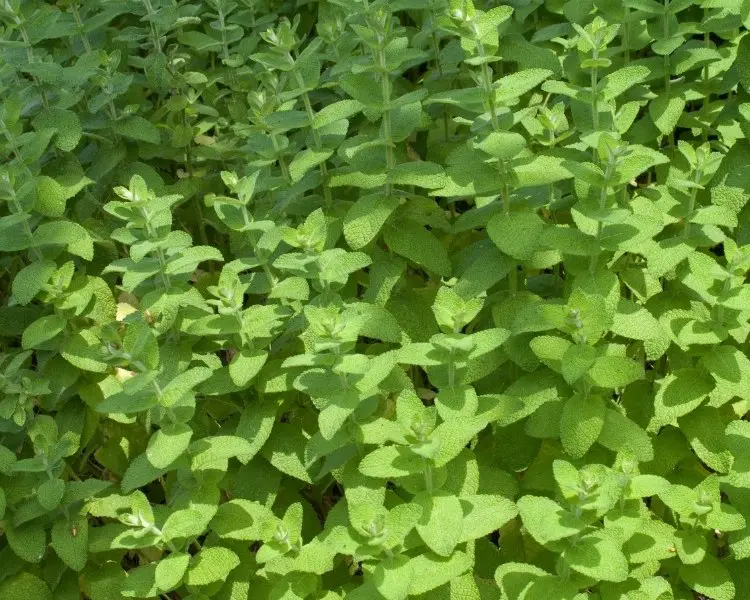
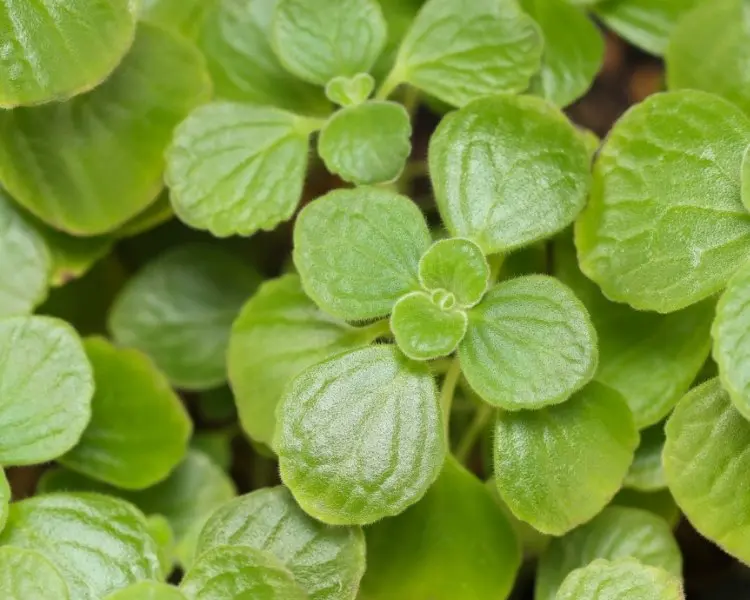
- Scientific Name: Mentha suaveolens
- Other Common Names:
- Woolly mint
- Fuzzy mint
- Flavor: Fruity, yet minty flavor and scent. The aftertaste of this mint is similar to an apple flavor, which is how it got its name
- Height: 24 inches
- Days to Harvest:
- Appearance: Round leaves with fuzzy hairs on the top
- Flower Color: White and pale pink
- Common Uses:
- Groundcover or as an ornamental
- Culinary Herb used in teas, salads, and other dishes
- Apple Mint Jelly
Apple, or “wooly mint” is a mild, rapidly growing type of mint. Its common name comes from its fruity smell and apple aftertaste. If you grow apple mint near tomatoes, cabbage, and peas, those vegetables will have a more robust flavor.
It thrives on partial sunlight, relatively warm environments of no less than 50-degrees Fahrenheit, and nutritious soils. While it can survive lower temperatures, you may experience stunted growth or a smaller harvest.
The plant can grow to 2 feet tall and, like other varieties of mint, will spread rapidly across gardens. You can grow the apple mint from seed or grow cuttings of the mature mint plant in water.
Banana Mint
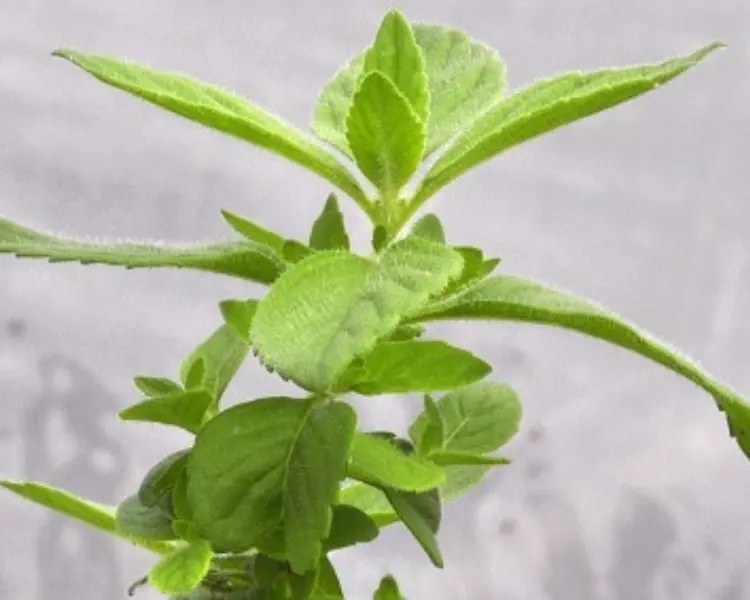
- Scientific Name: mentha arvensis ‘banana’
- Other Common Names:
- Flavor: Mint with a hint of banana
- Height: 36 inches
- Days to Harvest: 90 days
- Appearance: Soft green leaves with silver hairs
- Flower Color:
- Common Uses: Flavorings, teas, and fruity desserts
Similar to apple mint, banana mint gets its name from its taste.
Banana Mint can be added to drinks for an extra flavor boost; adding it to iced coffee will give your drink a fruity taste without the need for any artificial sugars. I have GOT to try this out.
This particular mint variety tastes great when added to desserts too because it gives them more sweetness than you would typically get from other types of mint.
Calamint
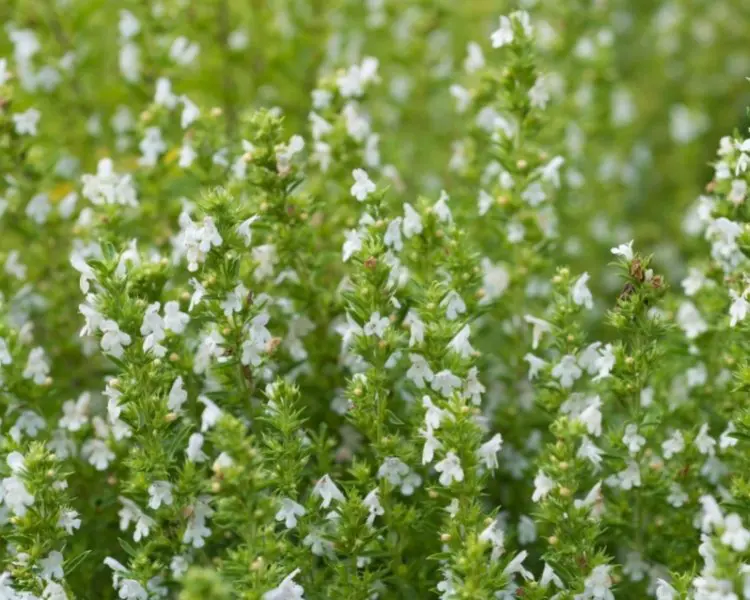
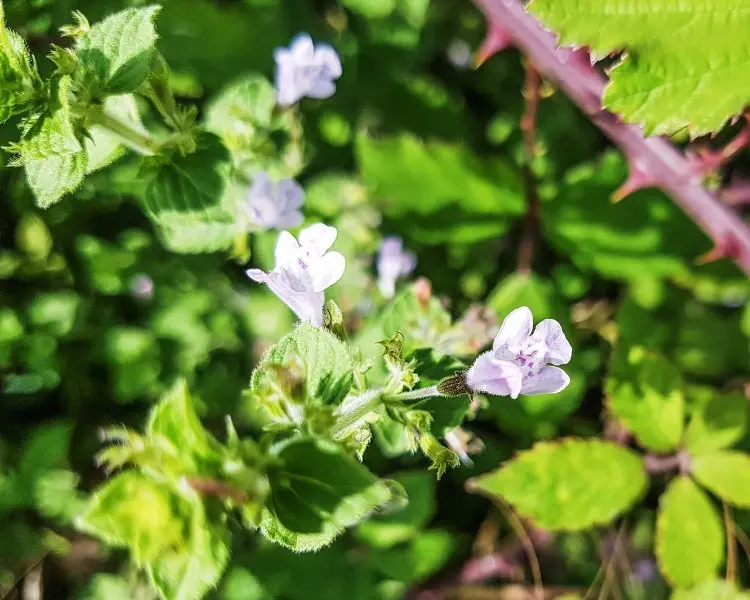
- Scientific Name: Calamintha nepeta
- Other Common Names:
- Flavor: Strong camphor scent
This mint is native to the UK and grows in sandy soils and full sun in hardiness zones five to nine. It has large leaves with deep veins, thick stalks, and fuzzy herbs. You shouldn’t use or handle this type of mint if you’re pregnant.
This one is not typically used in cooking but more in the medicinal space, as it contains menthol, which can be used as a skin and muscle-relieving ingredient.
Catmint
- Scientific Name: Nepeta mussinii
Not to be confused with catnip (ha), this type of mint has striking grey-green leaves with blue-lavender flowers.
Chocolate Mint
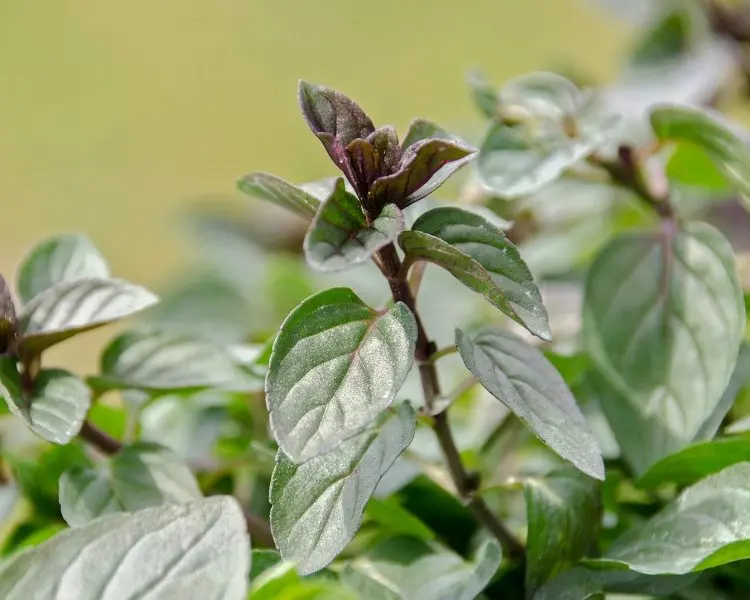
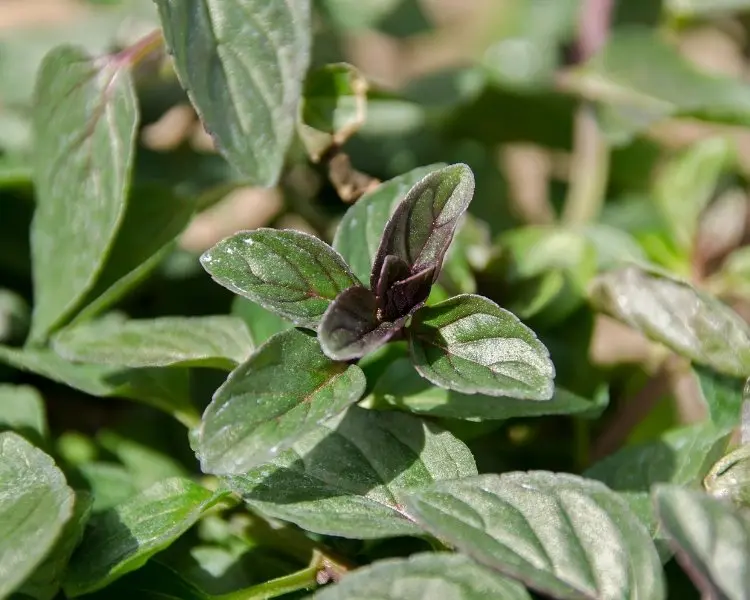
- Scientific Name: Mentha x piperita ‘Chocolate’
- Other Common Names:
- Flavor: Minty, chocolate flavor
- Height: 3 feet
- Days to Harvest:
- Appearance: Chocolate mint has deep green leaves, with indigo or deep purple veins and square stems.
- Flower Color: Light pink or lavender flowers
- Common Uses:
- Hot or cold teas
- Coffee drinks for added flavor
- Added to hot chocolate for even more chocolate punch
Chocolate mint has brown stems and markings on the leaves – and the best part is it smells and tastes slightly chocolatey.
It can be added to whipped cream and blended in an ice cream maker to create a chocolate-mint ice cream without adding chocolate. While it won’t taste exactly, the same, that’s pretty friggin cool if you ask me.
Corn mint (Field Mint)
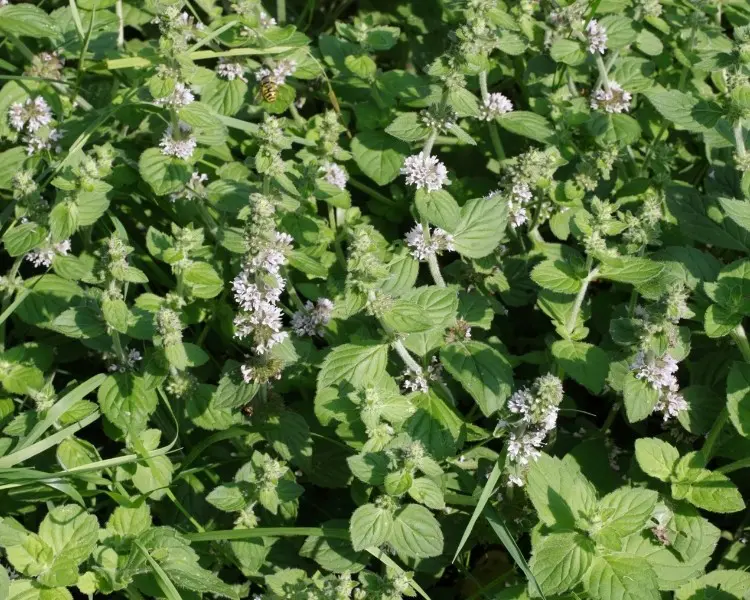
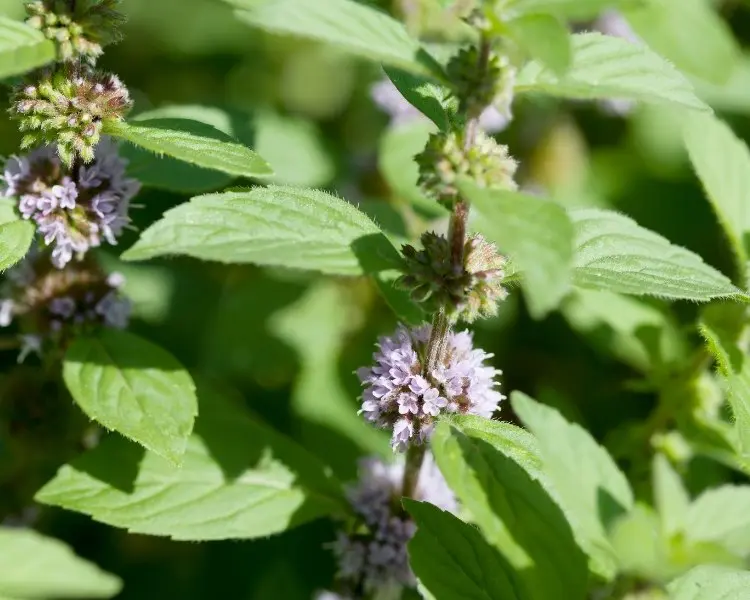
- Scientific Name: Mentha arvensis
- Other Common Names:
- Field Mint
- Wild Mint
- Pudina or podina in Hindi
- Flavor: Cool, mild with a sweet hint
- Height: 3-24 inches tall
- Days to Harvest: Around 90 days
- Appearance: Lighter green leaves with
- Flower Color: Pale purple flowers
- Common Uses:
- Medicinal uses: stomach pain, cough suppressant
- Commonly grown for menthol
In ayurvedic medicine, Pudina (another name for corn mint) is used for stomach and gastric issues, while Europeans used wild mint for other digestional and gall bladder issues, as well as to help with coughing.
Corn mint leaves have been used as an ingredient in the production of toothpaste and mouthwash due to their high menthol content. Tannins, alpha-pinene, and flavonoids can also be extracted from wild mint for various uses.
Corsican Mint
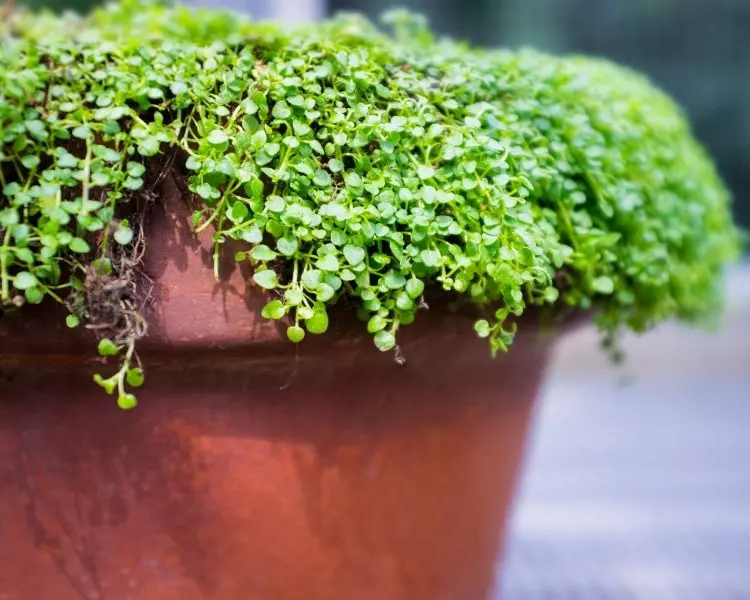
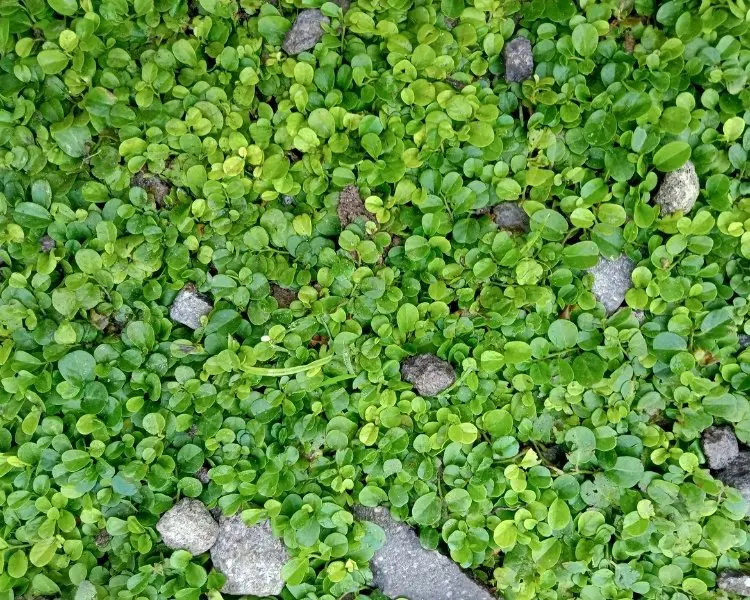
- Scientific Name: Mentha requienii
- Other Common Names:
- Creeping mint
- Flavor: Mint, with a hint of sage
- Height: Around 2-4 inches tall, making Corsican mint great for groundcover
- Days to Harvest:
- Appearance:
- Flower Color: Lilac flowers
- Common Uses:
- Groundcover mint
- Ornamentals
- Creme de menthe liqueur flavoring
Corsican mint is a low-growing mint that is often used as a groundcover because it self-seeds and will quickly fill up open spaces in garden beds or around your property. You have been forewarned though as Corsican mint will take over the space it’s planted in, so make sure you don’t want anything else growing there with it.
Corsican mints will produce flowers, but they are small and not as common as flowers from other types of mint.
Curly Mint
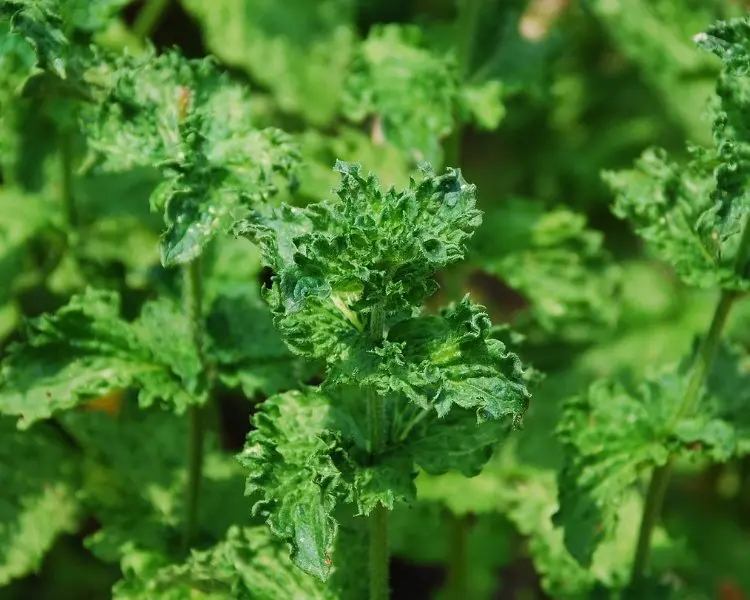
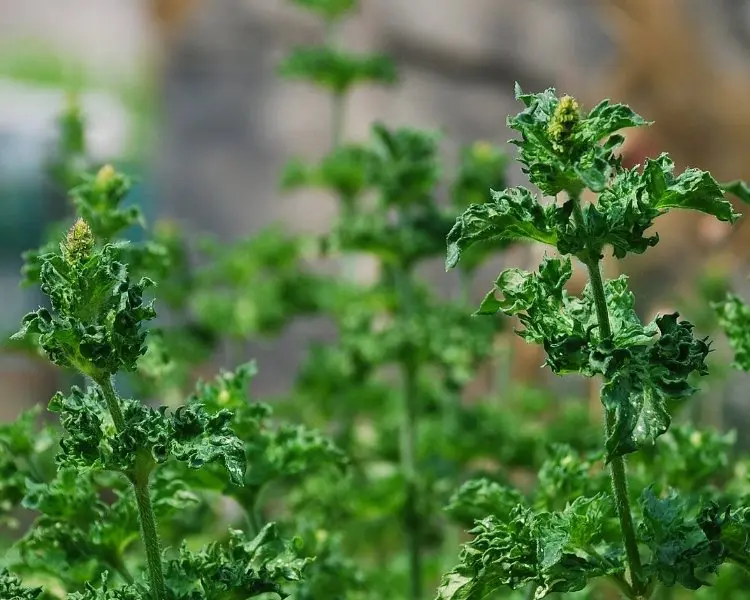
- Scientific Name: Mentha spicata var. crispa
- Other Common Names:
- Curly leafed mint
- Moroccan mint
- Flavor: Smells like spearmint, but tastes a little sweeter
- Height: 12-36 inches
- Days to Harvest: 75-90 days
- Appearance: Deep green leaves that curl almost like a curly kale leaf
- Flower Color: Pink, purple, or even white
- Common Uses:
- Seasoning
- Garnish
- Teas
Curly mint is a type of mint that is not commonly found in stores but can be grown easily. It grows quickly and is a perennial that can survive up to 10 years.
Curly mint does well as an ornamental and can withstand almost any environment making it great for landscaping, even in urban settings. Curly mint is also a great addition to the kitchen with its robust flavor and fun-shaped leaves. It almost looks like parsley!
Egyptian Mint
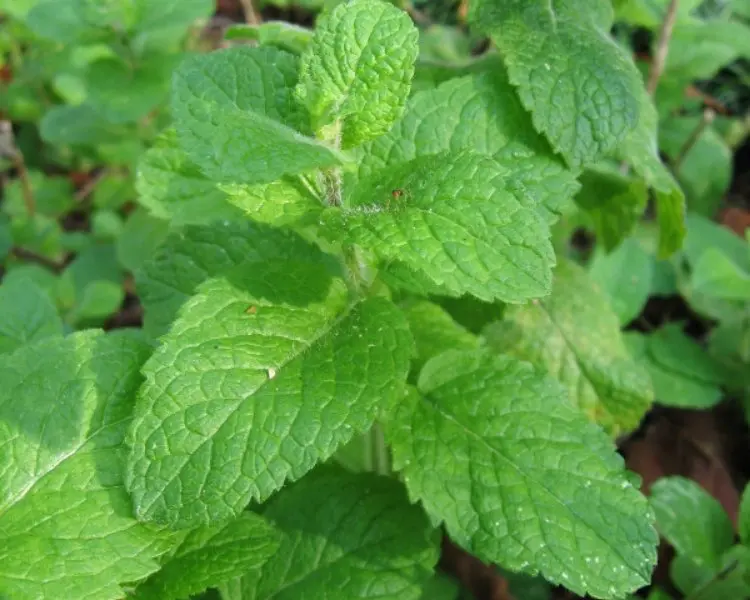
- Scientific Name: Mentha niliaca
- Other Common Names:
- Flavor: Similar to Apple mint in flavor, but a little more subtle
- Height: Up to 36 inches
- Days to Harvest:
- Appearance: Velvety leaves that are gray-green with silvery hairs
- Flower Color: White and lilac flowers
- Common Uses:
- Herbal teas, drinks, salads or other dishes
- Medicinal teas for digestion
Egyptian mint is less invasive than other cultivars and varieties of mint, so you don’t have to worry about it taking over your garden.
Ginger Mint (aka redmint)
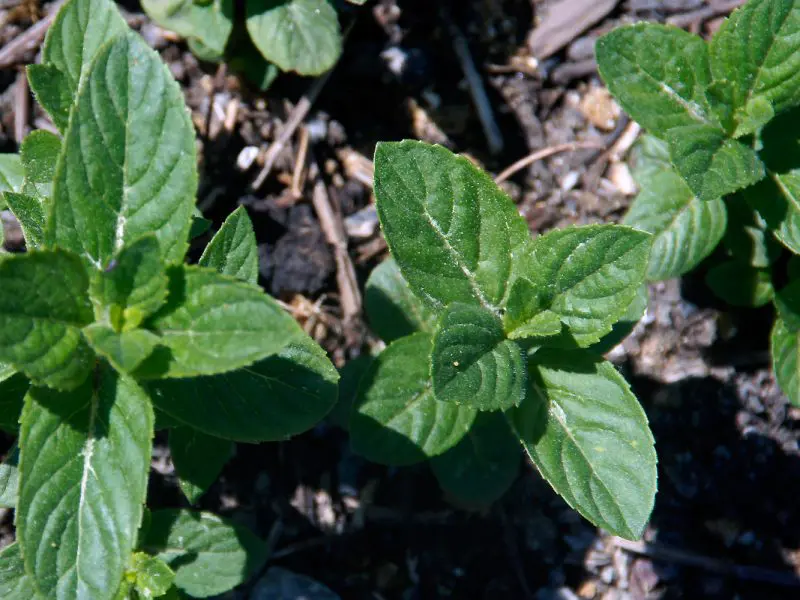
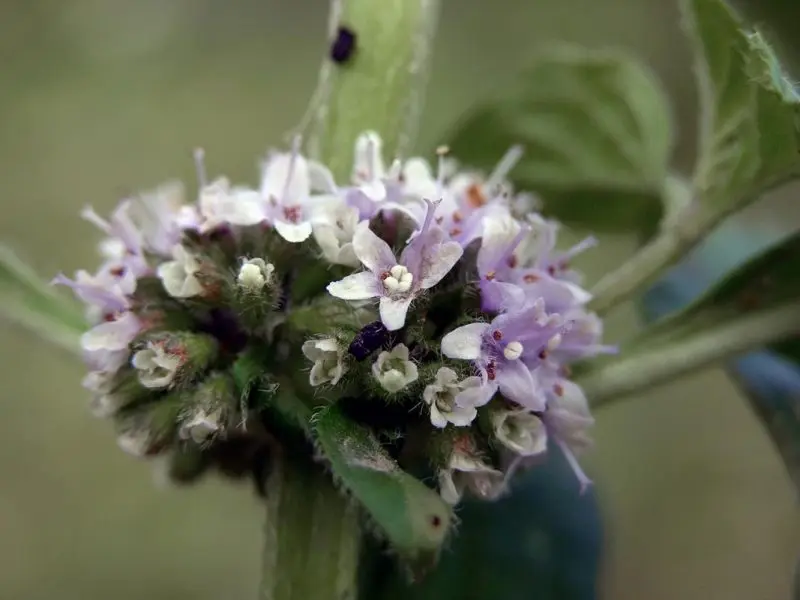
- Scientific Name: Mentha x gracilis
- Other Common Names:
- Red mint
- Slender mint
- Scotch mint
- Scotch Spearmint
- Golden Apple Mint
- Little-leaved Mint
- Flavor: Fruity, ginger smell, and flavor
- Height: 2-3 feet
- Days to Harvest: 90 days
- Appearance: Ginger mint has variegated leaves that have yellow veins.
- Flower Color: Purple to reddish flower
- Common Uses:
- Ginger mint butter
- Teas, salads, and summery drinks
Horse mint (Silver Mint)
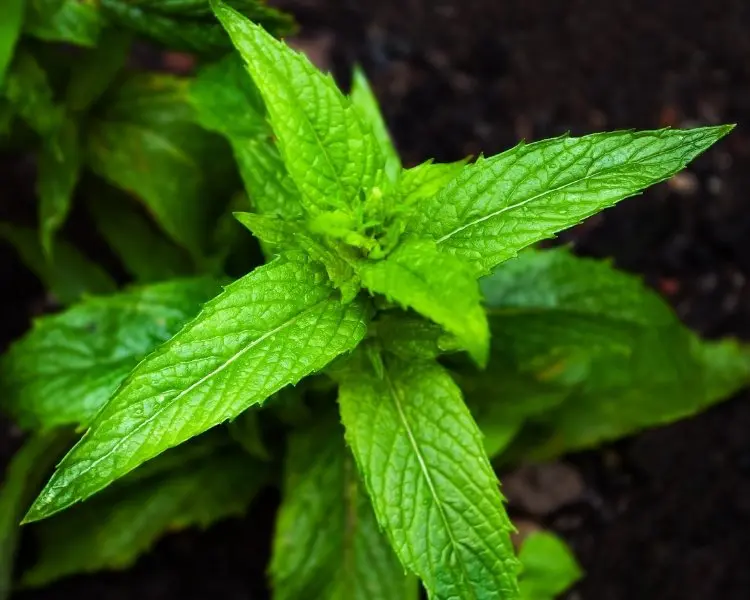
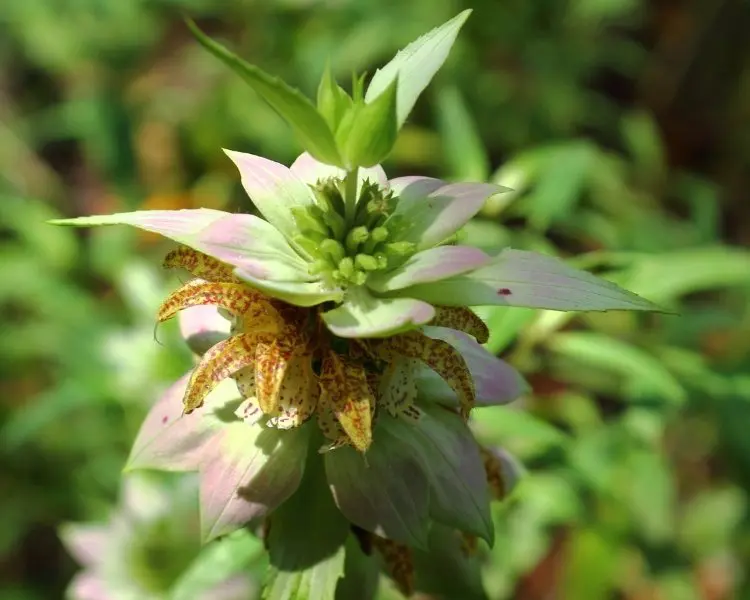
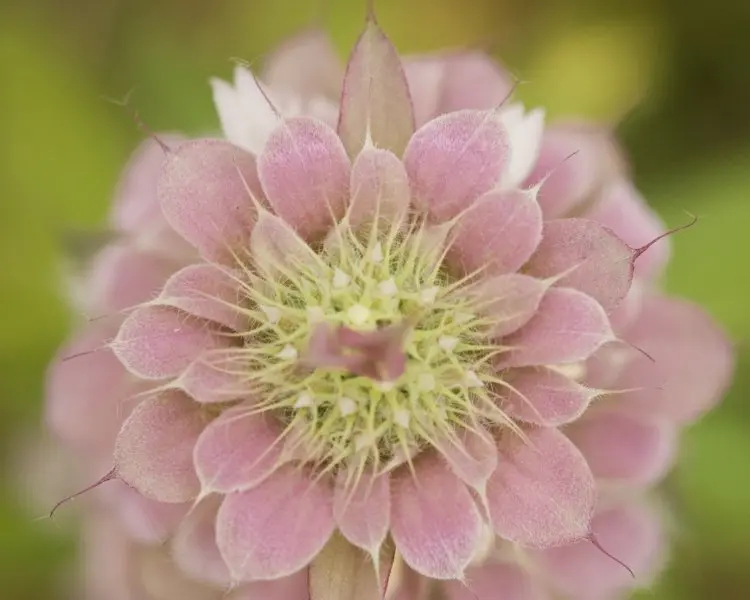
Horsemint is one of the more beautiful mint varieties when it flowers. It produces large pink and white flower petals that are great for bouquets or just adding some color to your garden.
A horsemint flower is often pink with white edges. There is also a variety of this called purple horsemint, which of course, has purple flowers instead of pink.
- Scientific Name: Mentha spicata var. longifolia
- Other Common Names: Spotted bee balm, bee balm
- Flavor: Horsemint smells similar to thyme, but has a minty bitter taste.
- Height: Up to 3 feet
- Days to Harvest: About 90 days
- Appearance: Horsemint has long, sharp ended, green leaves
- Flower Color: Flowers of horsemint are pale pink or purple, depending on the variety
- Common Uses:
- Often grown as a wildflower
- Most commonly used for gastric issues and helping with gas
- Relieving menstrual pain
Lavender Mint
- Scientific Name: Mentha piperita ‘Lavendula’
- Flower Color: Purple
- Common Uses:
- Potpourris
- Lavender mint tea
- Lip balm, shampoos, and other personal products
This mint is hardy and versatile and can be used in soaps, creams, lip balms, shampoos, and creams. Some people enjoy this fresh mint added to cold lemonade or other drinks.
Orange Mint
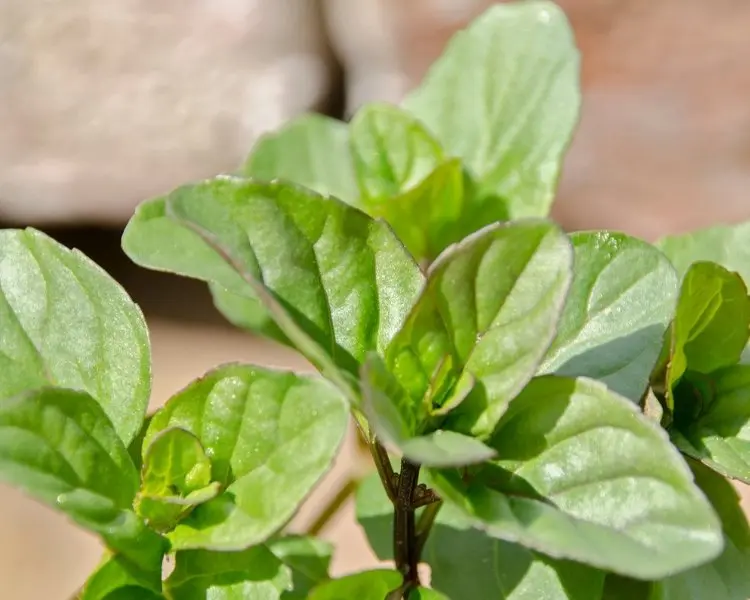
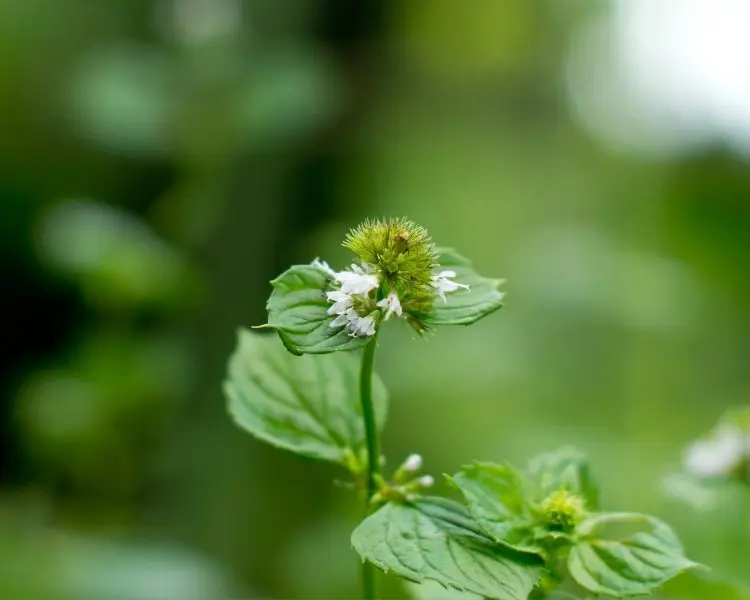
- Scientific Name: Mentha piperita citrata
- Other Common Names:
- Bergamot Mint
- Eau de Cologne Mint
- Flavor: Orange mint has a minty flavor of citrus and spice
- Height: 2 feet tall
- Days to Harvest: 90 days
- Appearance:
- Flower Color:
- Common Uses:
- Salads, desserts, pesto, jams and jellies, drinks, and cocktails
- Potpourri
- Orange mint tea
A tea made with dried orange mint leaves is said to help with nausea, various digestive problems, and alleviate stomach pains.
The oil from orange mint is often used for essential oils and added to air fresheners to brighten up a room.
Are you a fan of Chartreuse? The original Chartreuse liqueur had 130 secret ingredients, and orange mint is said to have been one of them.
Pennyroyal Mint
- Scientific Name: Mentha pulgeium
- Other Common Names:
- Squaw mint
- Mosquito plant
- Pudding grass
- Flower Color: Pale blue and lavender flowers
Peppermint
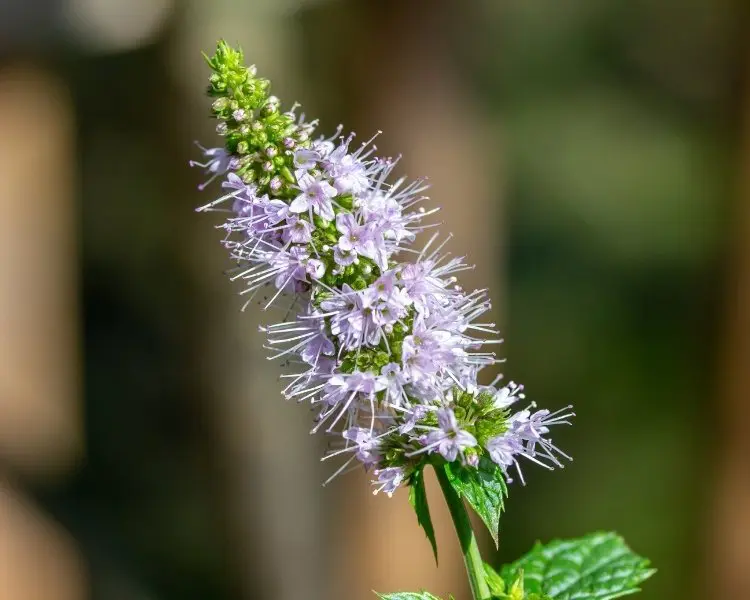
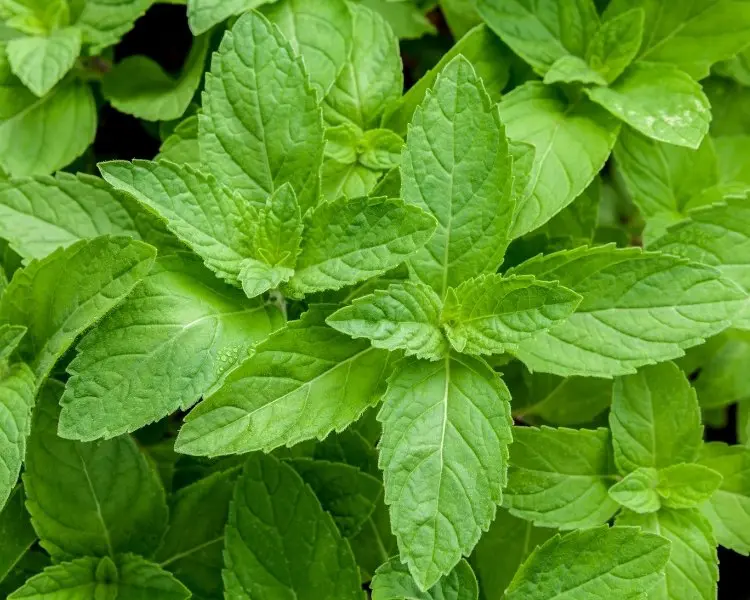
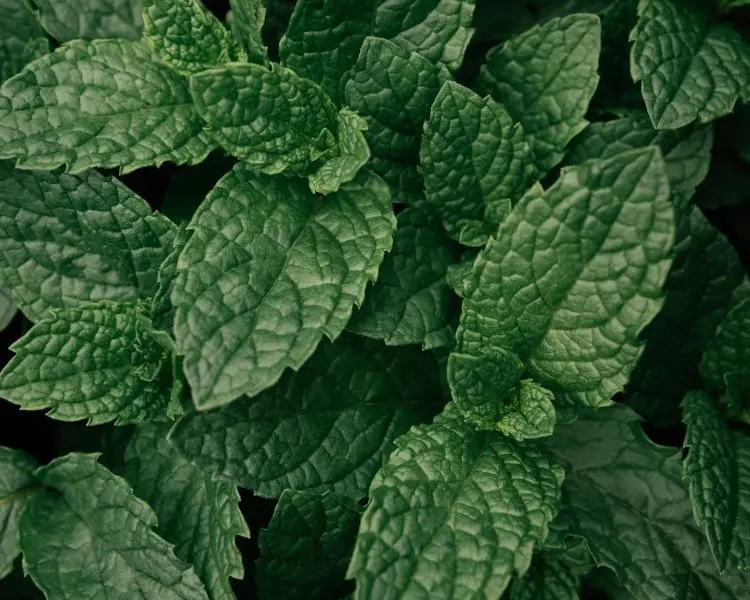
- Scientific Name: Mentha x piperita
- Other Common Names:
- Flavor: Strong menthol flavor
- Height: 3 feet
- Days to Harvest: 90 days
- Appearance: Deep green leaves, with noticeable vein structure
- Flower Color: Purple/pink
- Common Uses:
- Delicious additive to foods and drinks
- Soothe aches and pains
- Pest repellent
Peppermint is one of the more common varieties of mint in use today.
Peppermint is useful around the house, as it’s said to help keep rodents, flies, ants, and other pests away with its strong smell.
Pineapple Mint
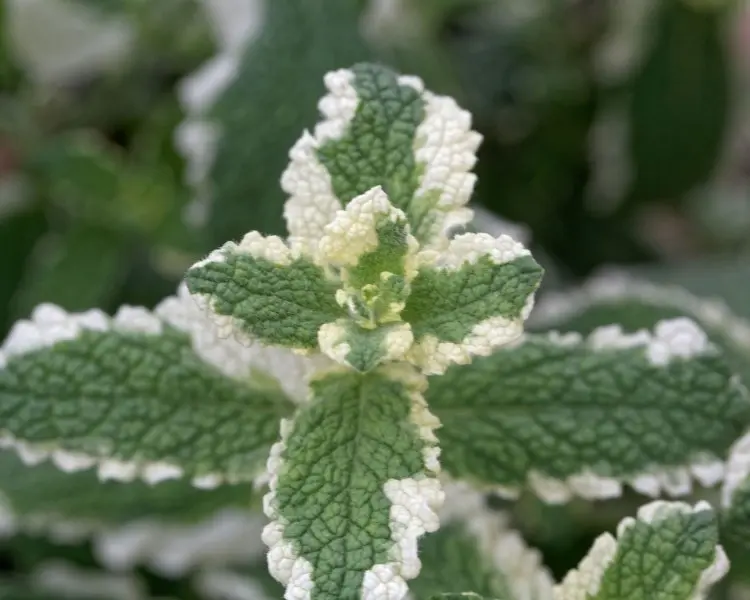
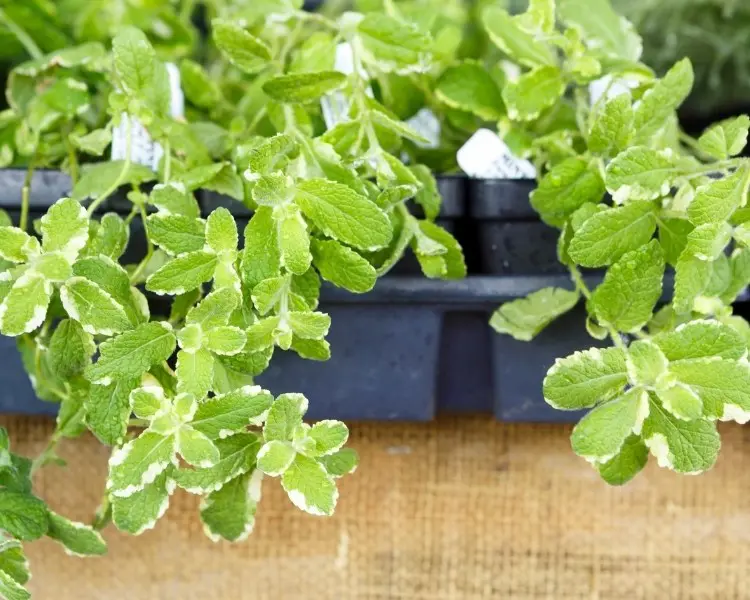
- Scientific Name: Mentha suaveolens ‘Variegata’
- Other Common Names:
- Flavor: Minty, with a hint of pineapple
- Height: 3 feet
- Days to Harvest: 90 days
- Appearance: Green and white variegated leaves
- Flower Color:
- Common Uses:
- Used in fruity salads, garnishes, and potpourris
Pineapple mint is a variety of apple mint. This mint is known for its variegated white and green leaves.
It’s often used in potpourri that is fruity and light as well. Pineapple mint also makes a great groundcover or accent plant in your yard due to its beautiful coloring, and sometimes has fully white leaves instead of two-toned with green.
Red Raripila Mint
- Scientific Name: Mentha x smithiana
- Other Common Names:
- Flavor: Similar to spearmint
- Height: 36 inches
- Days to Harvest: 90 days
- Appearance: Dark green leaves with a red tint
- Flower Color: Pink flowers
- Common Uses:
- Ice cream
- Beverages
- Essential oils
- Rodent repellent
Red raripila mint is a cross between spearmint, watermint, and corn mint. It’s said to help aid digestion and calm an upset stomach.
The red raripila mint leaves are commonly spread around areas like granaries that need to keep mice or rat populations down as they are not attracted to the strong minty smell.
Spearmint (Garden Mint)
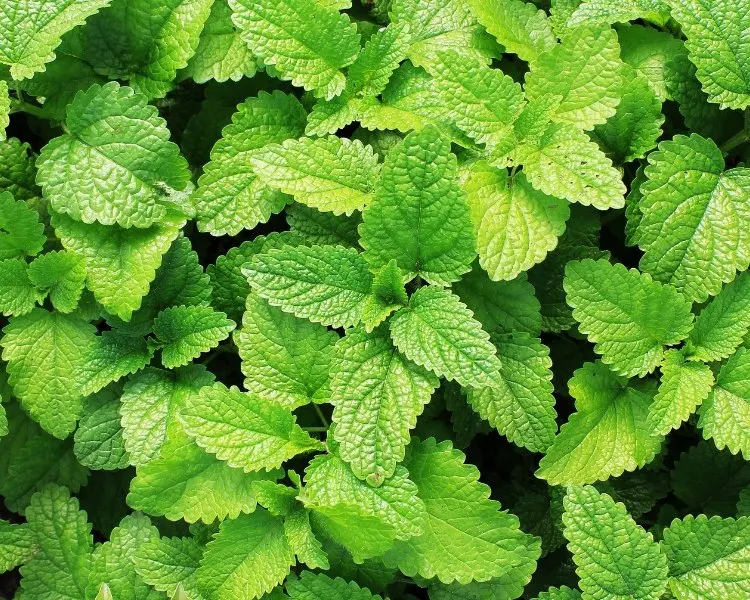
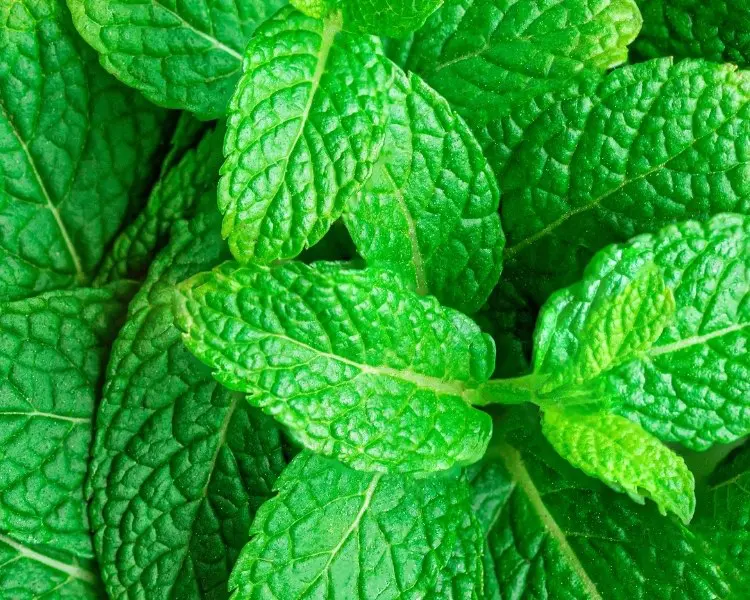
- Scientific Name: Mentha Spicata
- Other Common Names:
- Garden mint
- Flavor: Sweet, but minty flavor
- Height: 12-40 inches tall
- Days to Harvest:
- Appearance: Hairless or slightly hairy stems, broad leaves with serrated edges
Spearmint is one of the most common mint plant varieties and has leaves that are very pronounced and sharp-looking. The ends of the leaves are shaped like spears, giving this mint the name “Spearmint”. How clever 🙂
Spearmint is the main ingredient in Maghrebi tea (aka Moroccan mint tea).
The mints you grab in tins at the grocery store are typically made with spearmint. It is also found in chewing gum, tea, and essential oils.
The leaves may be used fresh, dried, or frozen, but it’s best to harvest the leaves before the plant flowers. Mint in general is a potentially invasive plant that is popularly grown in containers to limit its spread. Mine even overwintered last year and has tripled in size.
Strawberry Mint
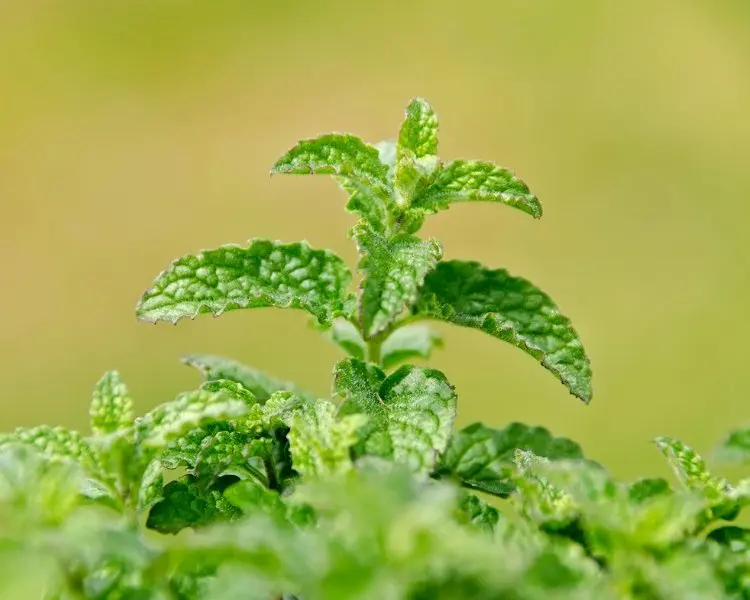
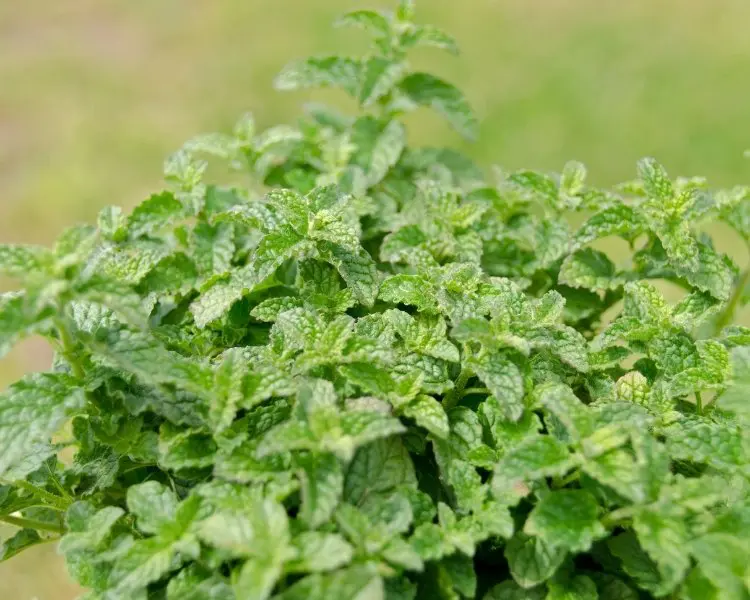
- Scientific Name: Mentha spicata ‘strawberry’
- Other Common Names:
- Flavor: Fruity, but minty strawberry flavor
- Height:
- Days to Harvest:
- Appearance: Similar to spearmint with bumpy leaves and pointed ends
- Flower Color: Purple flowers
- Common Uses:
- Tea
- Drinks
- Fruity salads
A cultivar of spearmint, strawberry mint gets its name from the very distinct strawberry scent it gives off.
Watermint
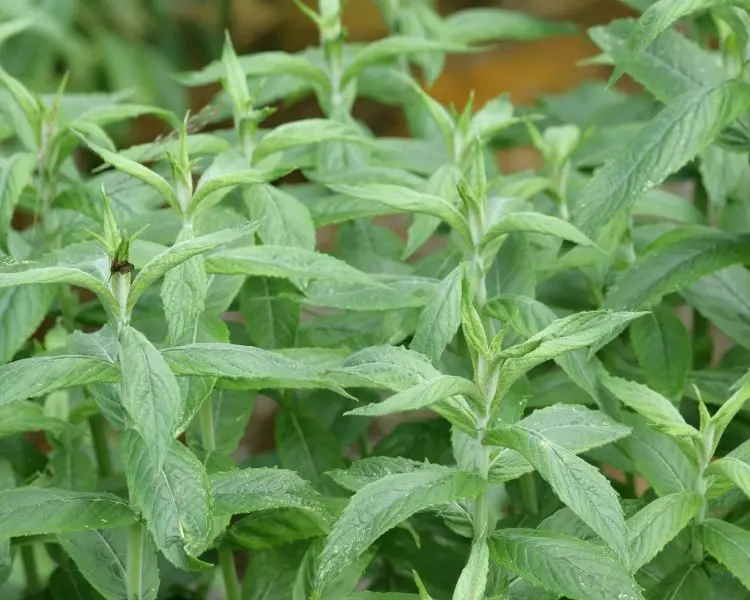
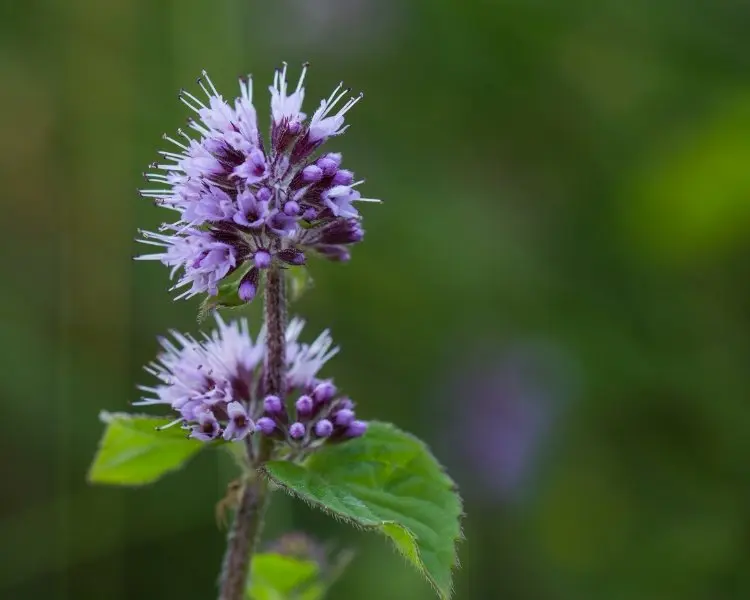
- Scientific Name: Mentha aquatica
- Other Common Names:
- Hairy mint
- Flavor:
- Height: 3 feet tall
- Days to Harvest:
- Appearance:
- Flower Color: Purple or lilac flowers
- Common Uses:
Water mint grows in water as its name suggests. It can be found in shallow rivers, lakes, streams, and ponds.
Common Mint Pests
Mint has quite a few pests that can wreak havoc on the plant if not controlled.
- Aphids
- Flea Beetles
- Cutworms
Most of the common pests can be tamed using neem oil or insecticidal soap.
There are plenty of varieties of mint to choose from, and each has its own characteristics. From bright green leaves to variegated white and green leaves, to tiny leaves great as a groundcover.
Most taste great in tea, as a garnish to salads, in ice cream, and even as an essential oil.


